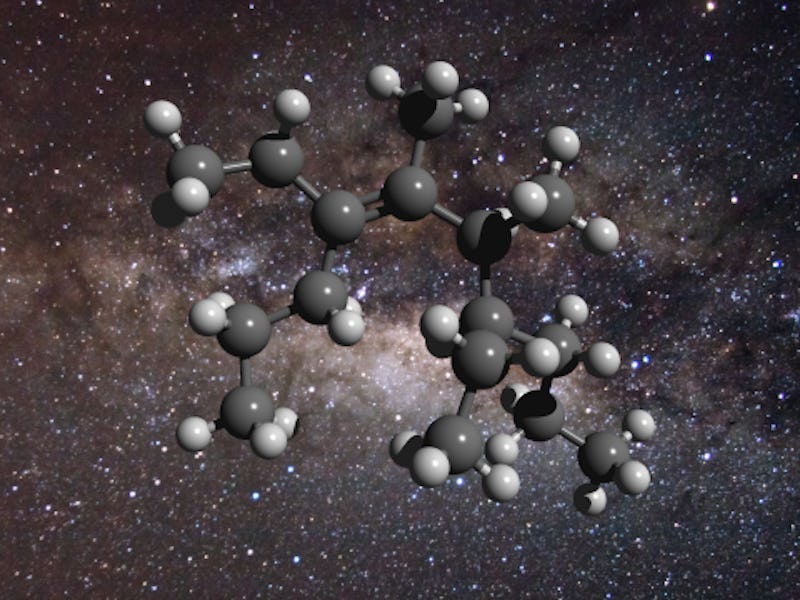Space Is Full of Grease, Gunk, and Other Organic Matter, New Study Claims
It’s worse than your favorite diner.

When considering the possibility of life in space, finding organic matter outside of Earth is indispensable to finding potentially habitable areas. A new study from the University of New South Wales in Australia and Ege University in Turkey sought to estimate how much of this matter already exists in space, the findings of which point to a galaxy of grease, gunk, and other gross space sludge just festering with the stuff.
Eight scientists from the collaborating universities analyzed specimens that are similar to interstellar dust to estimate how much aliphatic carbon, or grease-like carbon molecules, are floating around space. Their findings, which were published in the Monthly Notices of the Royal Astronomical Society on Tuesday, suggests that the Milky Way Galaxy is harboring “10 billion, trillion, trillion tonnes of greasy matter, or enough for 40 trillion, trillion, trillion packs of butter.”
An illustration of the structure of a greasy carbon molecule
Space has suddenly become light years more appealing as a destination now that there is the possibility of butter. However, this space grease is not ready for the frying pan, according to Dr. Tim Schmidt, a chemist at the University of New South Wales and co-author of the study.
“This space grease is not the kind of thing you’d want to spread on a slice of toast!” Schmidt warned. “It’s dirty, likely toxic and only forms in the environment of interstellar space (and our laboratory). It’s also intriguing that organic material of this kind — material that gets incorporated into planetary systems — is so abundant.”
Even though space grease is not, in fact, the delicious kind, the discovery of this much organic matter in the Milky Way is staggering. Carbon is not only essential for life but fuels the formation of stars and planets, and this accumulation of aliphatic carbon brings scientists closer to calculating just how much of it space can hold.
Interstellar carbon can exist as aliphatic, aka space grease, or as aromatic carbon, which scientists consider “mothball-like” and not nearly as delicious-sounding. Prior to this study, estimates of either were scant, but researchers found that there are roughly 100 greasy carbon atoms for every million hydrogen atoms, meaning the key to life in space is a greasy sludge just spreading across the Milky Way’s countertops.
The team was able to reach this calculation by recreating interstellar dust in a lab and then mimicking the process by which organic molecules are synthesized in the discharge of carbon stars. Aliphatic carbon can be detected by its ability to absorb light and scientists could spot its presence by using magnetic resonance and spectroscopy, which splits light into wavelengths.
“It’s not so dissimilar from what was recently found in Mars,” Schmidt told CNN, referring to organic matter discovered by NASA’s Curiosity rover. “This kind of material is everywhere in the galaxy.”
While common, this is the first attempt to quantify the material, which yielded results that far exceeded the team’s estimations. These new figures are the first step in understanding the nature and extent of greasy carbon, as well as its role in fostering the creation of new stars, planets, and potential signs of life.